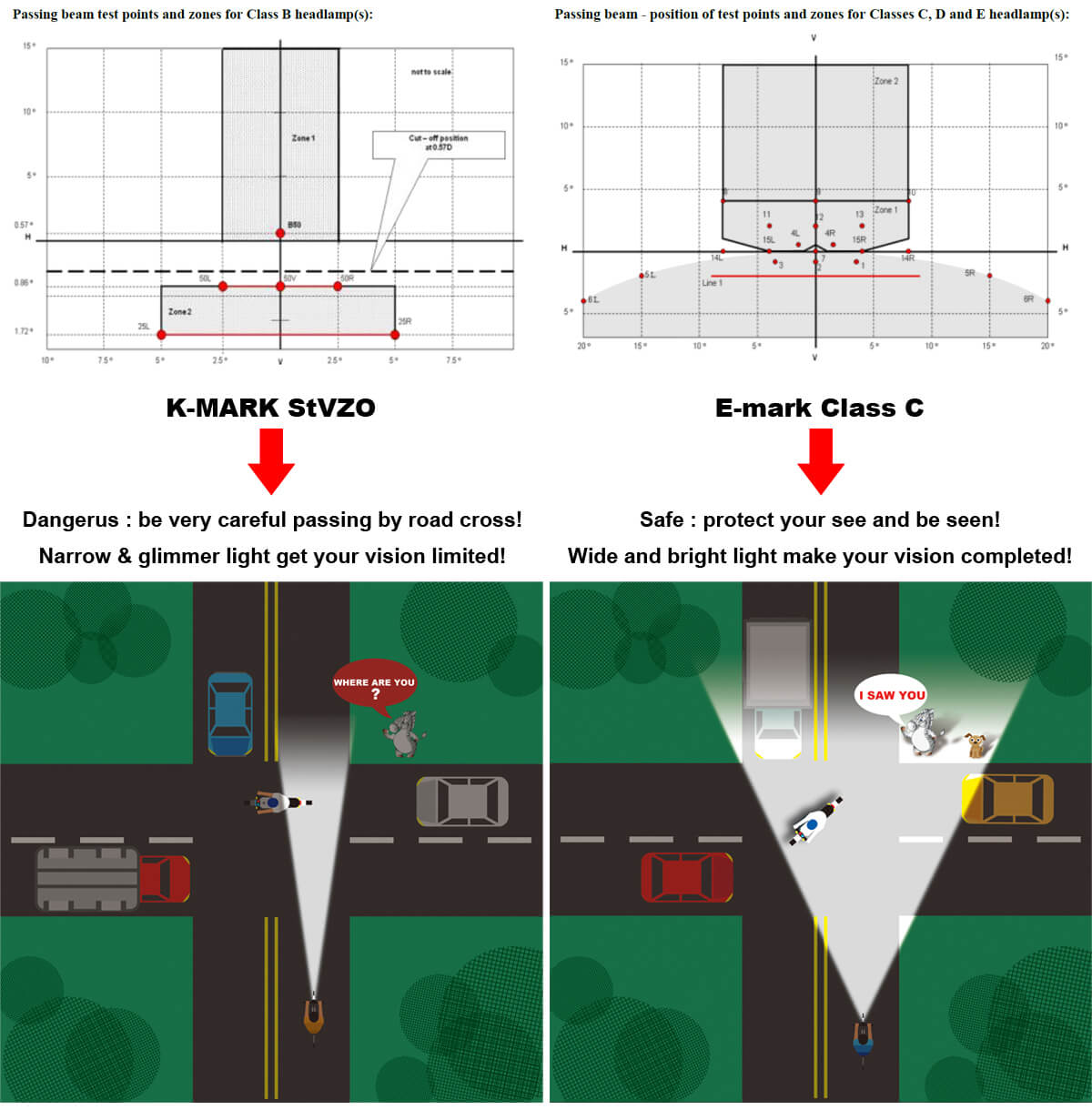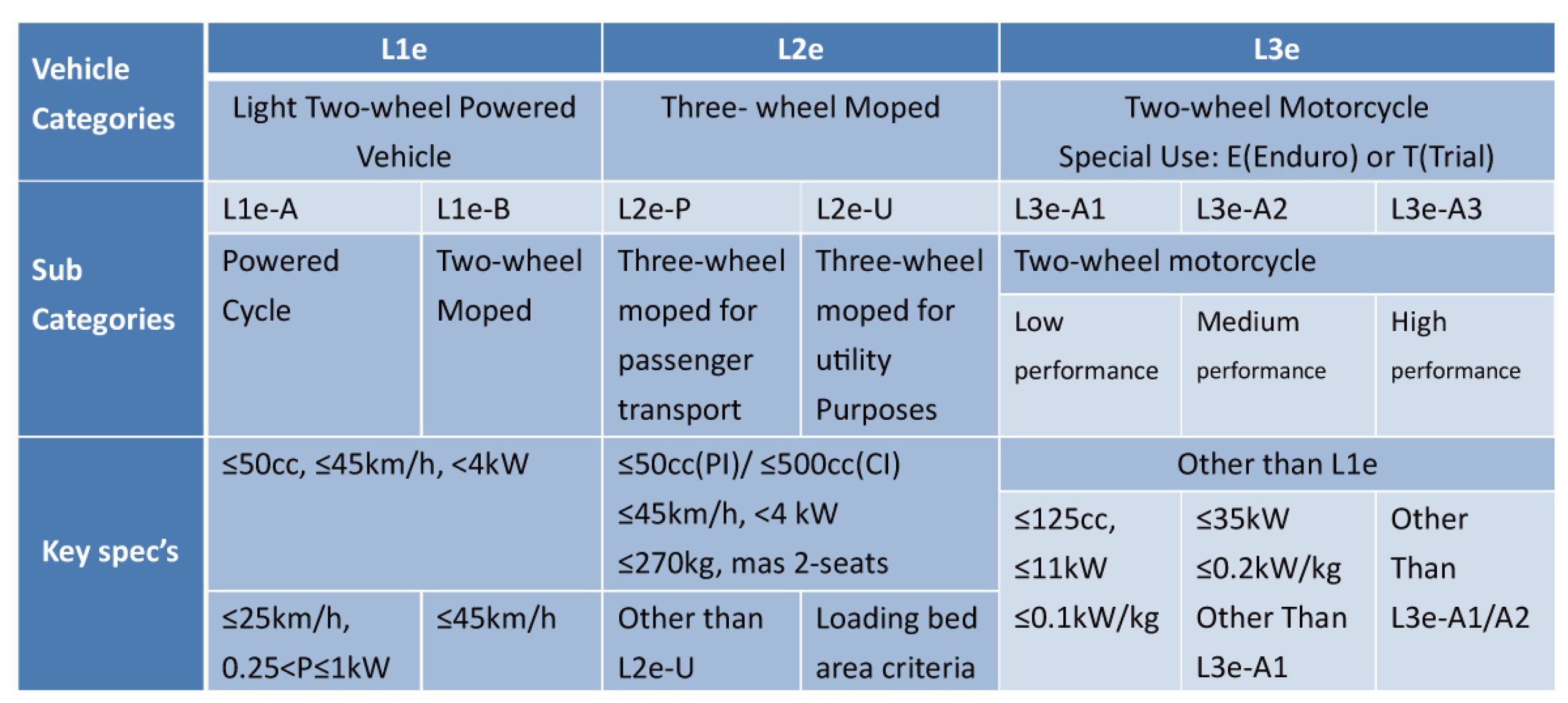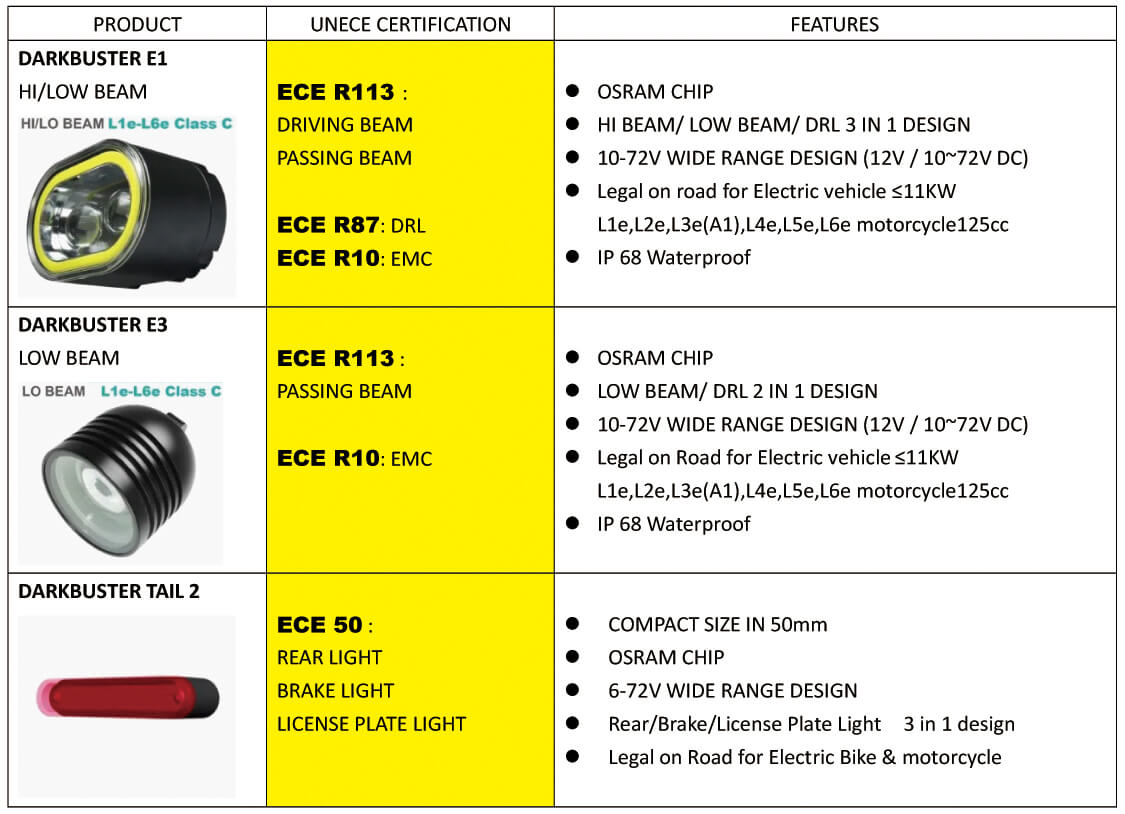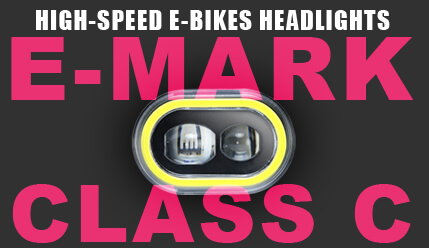Along with the electric two/three-wheeled vehicles market booming in Europe, there are more and more manufacturers step into this field. There’re all kinds of different type’s electric bikes includes high-speed E-bikes were born after then. From commuter e-bikes to prime electric bikes, cross dirt e-bikes, light electric motorcycles, e-scooters, etc.
In reality, most of the manufacturers still keep the old mind of bicycle lights on high-speed riding e-bikes. No matter the speed of bikes are under 25km/h or even much faster (such as electric off-road bicycle, electric motorbike).
That’s the reason we want to share some information about the importance of a safe light. Why E-mark Class C Approval Headlights are needed for higher speed electric two/three-wheeled vehicles?
What Are The Classes Of E-Mark Headlights?
In the UNECE regulation R113, headlamps have different “Classes”.
It states in 1.4. “Headlamps of different “Classes” (A or B or C or D or E)” means headlamps identified by particular photometric provisions.
Ref.:
https://www.unece.org/fileadmin/DAM/trans/main/wp29/wp29regs/2013/R113r3e.pdf
What Are The Particular Photometric Differences From CLASS A To CLASS E?
The accurate particular photometric of each class has detailed statements in the regulation’s contents. In generally speaking, class C, D, E are regulated by much stricter & higher standards, no matter the brightness, cut –off or photometric distribution. In other words, the difficulty of getting higher class C approval is several times than Class A & B.
Total Objective Luminous Flux Of All LED Modules Of Passing Beam Headlamp

The Test Points And Test Area Is Different For Class B & Class C, D, E Headlamps.

From all above figures, we can learn that:
* For a correct aiming the passing beam shall produce a sufficiently sharp “cutoff” to permit a satisfactory visual adjustment with its aid.
*The light shall be as evenly distributed as possible within zones 1 and 2 for Class C, D, or E headlamps.
*Class B: luminous flux is lower standard and the width range of test points is 10 degrees and only 7 test points in total.
*Class C, D, E: luminous flux is higher; the width range of test points is 40 degrees and 23 test points are needed.
The Applications On The Category L Type Approval Vehicles
From all the related regulations, actually the passing beam R113 Class A headlamps only apply to the vehicles’ max speed under 25 km/h. If it reaches 25 km/h, the headlamp needs E-mark R113 Class B at least. Furthermore, for the higher speed vehicles which are over 45 km/h and even category L3 vehicles, E-mark R113 Class C is the minimum standard.

As a result, after reading the EU standards for headlamps, we learned that the high-speed e-bikes especially the cross dirt e-bikes & light electric motorcycles need higher Class level approval for safe riding! Because wide enough & bright enough beam can help the safety improved substantially in all directions of front, left & right, especially at the road crossing!
So, would you like to upgrade your headlamps from 30 lux to 300 lux and choose a light with safety vision as the EU transportation department required?
Ref.:
https://www.unece.org/fileadmin/DAM/trans/main/wp29/wp29regs/2013/R113r3e.pdf
https://www.unece.org/fileadmin/DAM/trans/main/wp29/wp29regs/r074r2e.pdf
https://globalautoregs.com/rules?t=UNR
https://en.wikipedia.org/wiki/Vehicle_category
ECE/TRANS/WP.29:
https://www.unece.org/fileadmin/DAM/trans/main/wp29/wp29resolutions/ECE-TRANS-WP29-78-r3e.pdf
The Test Points And Test Area Is Different For Class B & Class C, D, E Headlamps.

DARKBUSTER E1 HI/LOW BEAM/DRL
https://brightstartw.com/product/ebike-light-e-mark-darkbuster-e1-l1e-l6e-class-c
DARKBUSTER E3 LOW BEAM/DRL
https://brightstartw.com/product/electric-bike-lights-e-mark-darkbuster-e3-l1e-l6e-class-c
DARKBUSTER T2 Rear Light/Brake Light/License Plate Light
https://brightstartw.com/product/e-bike-tail-light-3-in-1-e-mark-darkbuster-t2
How to choose a safe electric bike headlight
https://brightstartw.com/blog/how-to-choose-a-safe-electric-bike-headlight/



